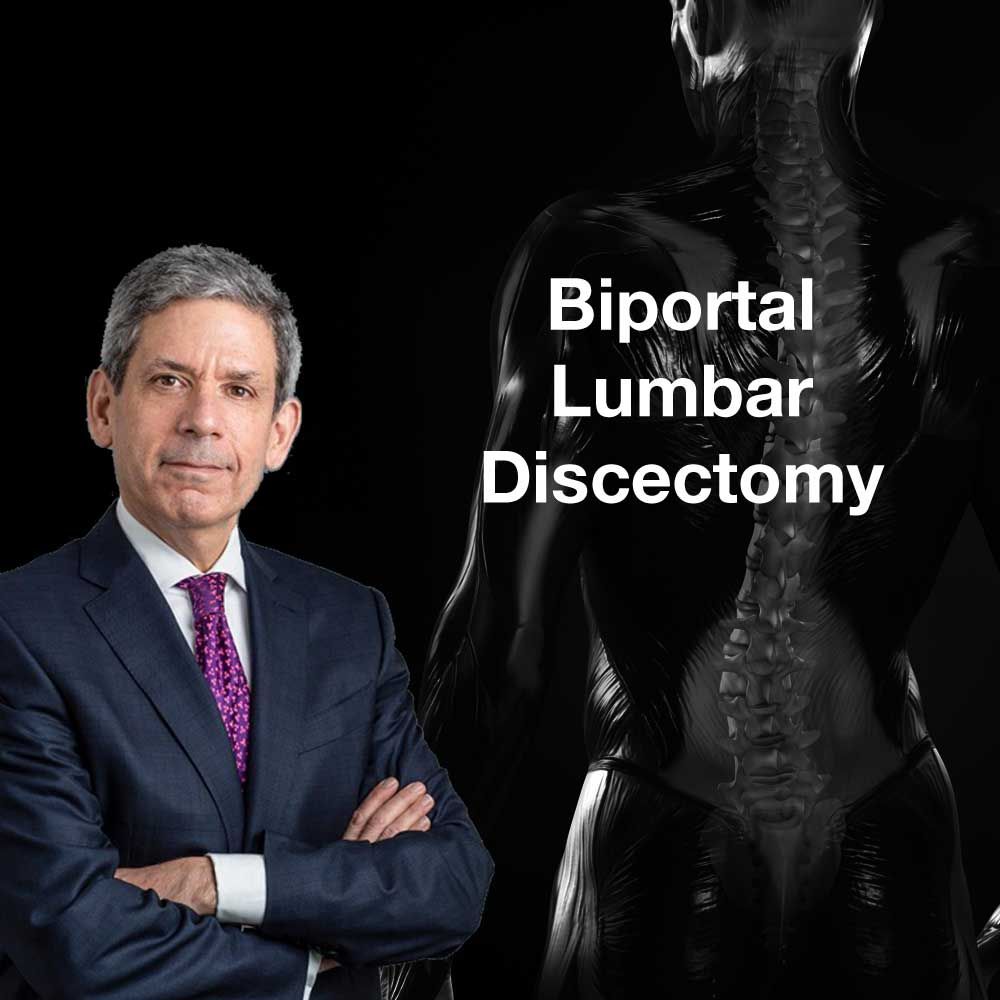Biportal Lumbar Discectomy
Both biportal lumbar discectomy and micro lumbar discectomy are minimally invasive surgical procedures used to treat herniated or bulging discs in the lumbar (lower) region of the spine. These procedures aim to relieve symptoms caused by compressed spinal nerves, such as lower back pain, leg pain, numbness, tingling, and weakness. However, there are differences in the surgical techniques and instruments used in these approaches:
Biportal Lumbar Discectomy:
- Number of Portals: Biportal discectomy refers to a technique that uses two small incisions or portals for access to the surgical site. One portal is typically used for the endoscope (camera), while the other allows for instrument placement.
- Endoscopic Approach: Like other endoscopic procedures, biportal discectomy uses an endoscope with a camera and light source to visualize the surgical area. The surgeon performs the procedure while watching high-definition images on a monitor.
- Tissue Preservation: The biportal technique aims to minimize tissue disruption and muscle damage, similar to micro lumbar discectomy. This preservation of surrounding tissues may lead to quicker recovery and less postoperative pain.
- Visualization: The use of two portals may provide a slightly different angle and depth of visualization compared to the single portal of traditional endoscopic discectomy.
- Instrumentation: Specialized instruments are used to remove or shrink the herniated disc material and perform the decompression of the affected nerves.
Micro Lumbar Discectomy:
- Single Incision: Micro lumbar discectomy typically involves a single small incision, through which a microscope is used for enhanced visualization.
- Microscopic Approach: This technique relies on a surgical microscope for magnified and illuminated visualization of the surgical area. The surgeon uses microsurgical instruments to perform the procedure.
- Tissue Preservation: Like biportal discectomy, micro lumbar discectomy is designed to minimize tissue disruption and muscle damage, leading to less postoperative pain and faster recovery.
- Visualization: The use of a surgical microscope offers clear, three-dimensional visualization of the surgical field, which can be highly advantageous for precise surgical maneuvers.
Comparison:
- Both biportal and micro lumbar discectomy are minimally invasive and share the goal of preserving surrounding tissues and minimizing postoperative discomfort.
- The choice between the two techniques may depend on surgeon preference, patient anatomy, and specific surgical goals. Some surgeons may prefer the enhanced visualization provided by a microscope, while others may prefer the dual-port approach of biportal endoscopy.
- Recovery times are generally similar for both procedures, with patients often experiencing quicker recovery and smaller scars compared to traditional open surgery.
Ultimately, the choice between biportal lumbar discectomy and micro lumbar discectomy should be based on a thorough evaluation by a qualified spine surgeon, who can recommend the most suitable technique for the patient's specific condition and individual needs. Both approaches can be effective in treating herniated lumbar discs and relieving associated symptoms.
